It’s a hen-peck-hen world out there. By “out there,” I refer to the front garden of our house in Wellfleet, where our three hens are placidly sipping from a puddle. Moments earlier, there had been a misunderstanding: Freckles had jabbed Sparkle’s toe with her beak. Chicken toes, in the right light, look a lot like dried mealworms, a snack we buy by the bagful for them. Sparkle knew better than to retaliate. Freckles is in charge.
The pecking order is real. The hens can be mean about it, but you just have to let it take its course. That’s what Russell Fulcher, the Wellfleet builder and animal whisperer who got us started keeping a flock says: “It’s chicken business.”
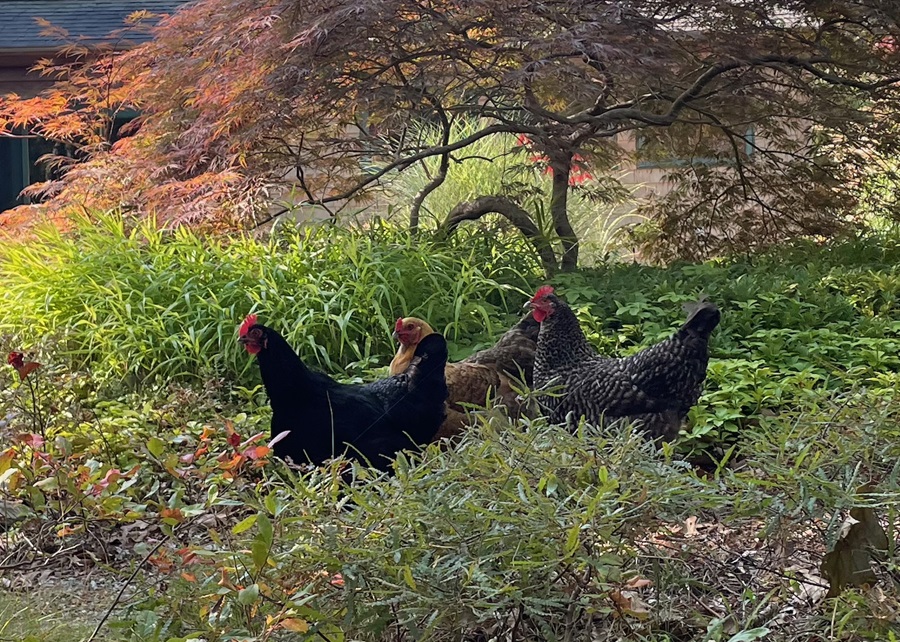
In a group of, say, 30 chickens, it’s an especially complicated affair. There’s a “hierarchy on three levels,” according to Storey’s Guide to Raising Chickens (Fourth Edition), by Gail Damerow. For a flock to get along, power must be established “among all the males, among all the females, and between the males and the females.”
With just hens, things are simpler. There exist only three possibilities: you’re at the top, middle, or bottom of the pecking order and that’s that. But in both situations, pecking order is “personality driven,” says Paula Erickson, who tends 22 chickens, including one rooster, on her farm in Truro (and has written about them in the Independent). It depends on “who’s bossy, and who’s docile. Kind of like people.”
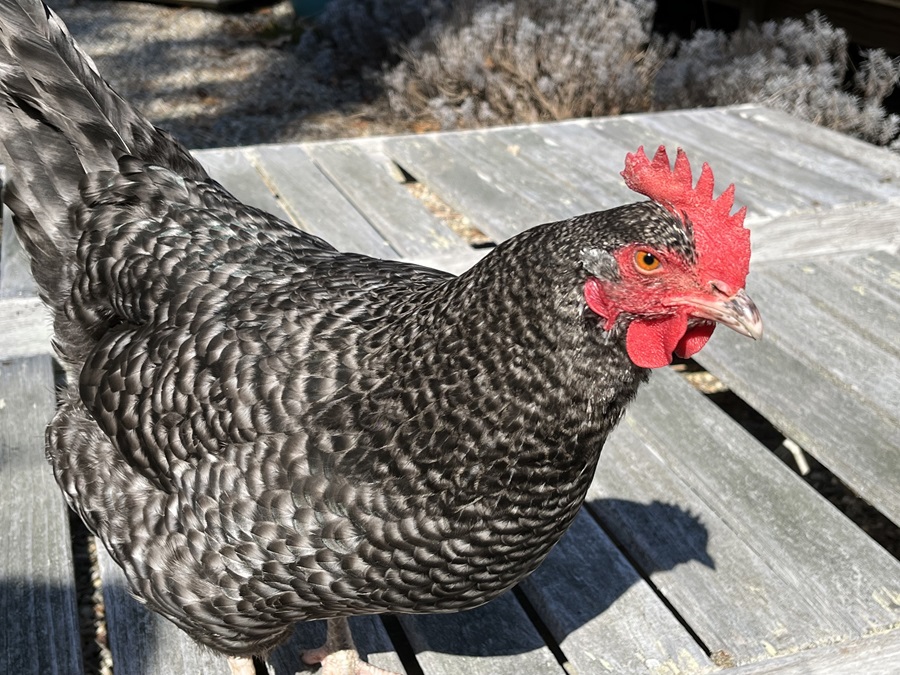
Freckles, top hen at our place, is a Plymouth Rock. Her feathers are mottled gray; her eyes are bright and intelligent. She rose to power through circumstance as well as merit: a year ago, then-boss Ruby was dispatched by a fox. Back then, Freckles was the middle hen. I don’t know if Freckles witnessed her leader’s death. What I do know is that she now maintains a watchful, clever, and sometimes ruthless demeanor. I believe only her own demise will compromise her position as Madam President.
Sparkle, the middle hen, is an Australorp. She’s mysterious, often standing apart from the other two with what can only be described as an aloof countenance. Her jet-black and iridescent-green attire adds to the whole goth vibe. Of our three hens, I feel I know Sparkle the least. I think she likes it that way.
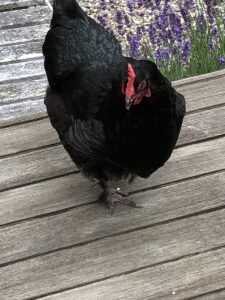
Last, there’s Brunhilde, a Buff Orpington (maybe — she could be a mixed breed). Named for a big figure in the opera world, Brunhilde only partly fits the mold. She’s big, she’s busty, she shines in the sun. But “she’s nice,” my grandmother says. Which I’ve come to understand is not meant entirely as a compliment.
I can’t help but wonder where I’d land in the pecking order. And especially in this socially tumultuous time, I wonder about the animalistic tendency toward hierarchy in our society. As humans, why haven’t we transcended this urge?
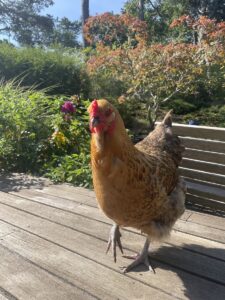
In a less nuanced world than ours, my chicken-watching suggests, hierarchy connotes organization. Freckles and Sparkle were introduced to Brunhilde, a newcomer, about a year ago. The coop experienced a period of disruption. After some time, the three hens settled into their positions. Still, if any one of them tried to change their status, things would very likely fall apart again.
For now, the hens are playing follow-the-leader, trailing behind Freckles as she takes them on their well-trodden path around the house. They take turns at their adventures: Freckles picks up some kind of berry, then spits it out. Sparkle picks it up and spits it out. Brunhilde picks it up and spits it out.
Walking behind them, I can’t help but anthropomorphize. Are they friends? “I think it’s possible,” says Erickson. “I believe in love.”
The hens often lie side by side in a sandy spot they’ve carved out in the yard. They flap and roll and preen together in perfect harmony. Brunhilde sprays Sparkle with dust, but she doesn’t get angry. Freckles rolls on top of Brunhilde and rolls off again without a fuss.
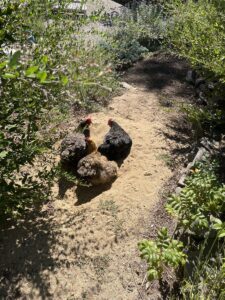
During these dirt baths, which the birds use to clean their feathers, they talk to each other. Damerow writes that chickens have a large vocabulary: “Brief, soft, repetitive notes of low frequency are comfort calls. Loud harsh sounds with high frequencies are alarm cries. Harsh sounds emphasizing low frequencies are threats.” Their talk can be more specific than that. “They tend to announce when they’ve laid an egg,” says Erickson. “The other chickens will come and check it out. I have to believe that most creatures who communicate are actually saying something.”
Chickens sing. It’s “the sound of happy hens,” writes Damerow. When I dig in the garden — an activity the hens understand and appreciate — they gather near me, humming and clucking. I sometimes sing back, making up chicken-related lyrics to various popular tunes. They seem to like it.
I often try to act as a “rooster figure,” standing over the group to scare coyotes and hawks away while the hens hunt invisible insects and devour visible toads. Sometimes, I reach out to Freckles, and she crouches down (I’ve heard that this is because she expects me to mount her, as a rooster would). Still, she lets me pet her and pick her up, so I preserve the hope that the chickens are fond of me.
We’re entering the bleak season, in which I don’t anticipate such easy socialization in the human world. Suddenly, in the late afternoon sunlight, I’m filled with a rush of affection for my feathered pets. “You’re my best friend,” I say to Freckles, and she dashes into the bushes. Did she spot a snack? Or is she dodging my love? Who knows? It’s chicken business.



